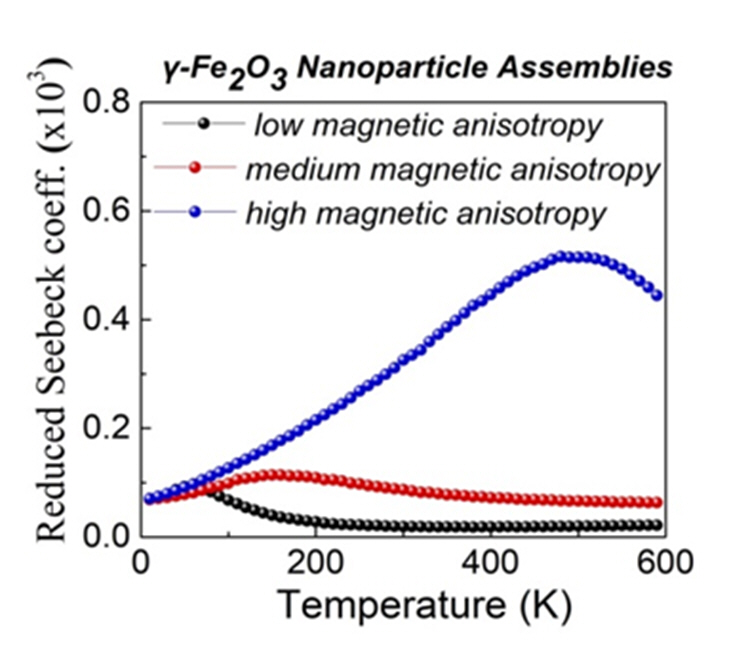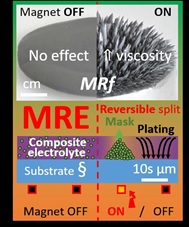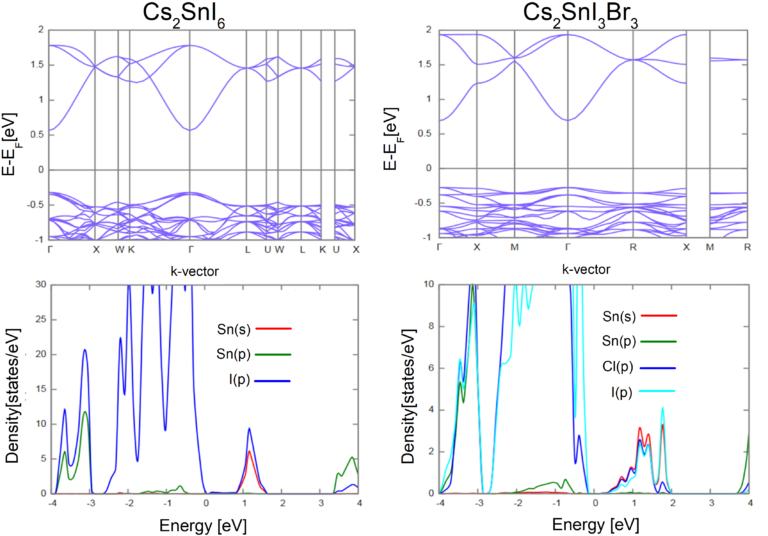Nanostructures for energy harvesting and green applications
Nanostructures have been proved to be pioneers in the field of energy harvesting and green technological applications. We use computational tools to explore the magnetic-thermo-electric properties of the studied structures.
1. Magneto-thermo-electric properties of ionic liquid based ferrofluids
Our group in the period (1/1/2017-30/6/2021) was participating in the H2020 FET Proactive project MAGENTA (MAGnetic nanoparticle based liquid ENergy materials for Thermoelectric device Applications) aiming at the development of novel thermoelectric materials for waste-heat recovery applications based on ionic ferrofluids (IL-FFs), that are versatile, and cost-effective systems. The originality of the project was based on the newly discovered thermal-to-electric energy conversion capacity of ionic-liquids based ferrofluids. In the framework of this project our group predicted optimal material conditions to enhance thermoelectric efficiency and deciphered the physical origins of thermoelectric/magnetic and thermo-diffusion phenomena in IL-FFs. We will continue our studies by investigating the thermal efficiency of the new generation of IL-FFs.
Selected Publications

Towards high-performance electrochemical thermal energy harvester based on ferrofluids
App. Mat. Today 19 (2020) 100587
Enhancement of the Seebeck coefficient in ferrofluid based thermoelectric materials: A numerical study
Materials Today: Proceedings 44(2021) 3483-3488
Charge distribution on the water/γ-Fe2O3 interface
J.Mat.Mat. 484 (2019) 74
2. Nano/micro magnetic structures for reusable mask patterning

Our group starting on the 1st of March participates in the HORIZON EUROPE (EIC Pathfinder) funded project REMAP (Reusable Mask Patterning). In 4 years REMAP making use of remotely (magnetically) controlled masking is aiming to create the first reusable mask-based patterning technology by conferring plating functionality to a magnetoresponsive fluid (MRf/MRE). This crucial modification frees the system from the reliance on conventional lithography for turning masks into patterns. By virtue of its waste prevention design REMAP will enable the addition or subtraction of just the right amount of material needed to obtain a desired surface pattern, setting the future standards of resource efficiency in microfabrication. Our group will lead the modelling of the new magnetorheological behaviour and will generate a holistic multiscale model with predictive power, able to inform experimental choices. Also, our group will elaborate the experimental results for the optimization of the ionic liquids based MREs and of the field gradients. By developing Finite Element Analysis codes we will also assist in the development of the remote magnetic controllers in the project.
3. Novel perovskites for energy harvesting (Mixed-halide Cs2SnI3Br3, defected Cs2SnX6)
Defect perovskites Cs2SnX6 (X = Cl, Br, I) and mixed-ion perovskite Cs2SnI3Br3 are studied as a non-toxic alternative to hybrid organic−inorganic CH3NH3PbI3 perovskite compound which yields efficiencies close to 20% in solar cells.
Selected Publications
Optical-Vibrational Properties of the Cs2SnX6 (X = Cl, Br, I) Defect Perovskites and Hole-Transport Efficiency in Dye-Sensitized Solar Cells
J. Phys. Chem. C 120 (2016) 11777-11785

Mixed-halide Cs2SnI3Br3 perovskite as low resistance hole-transporting material in dye-sensitized solar cells Electrochimica Acta 184 (2015) 466-474